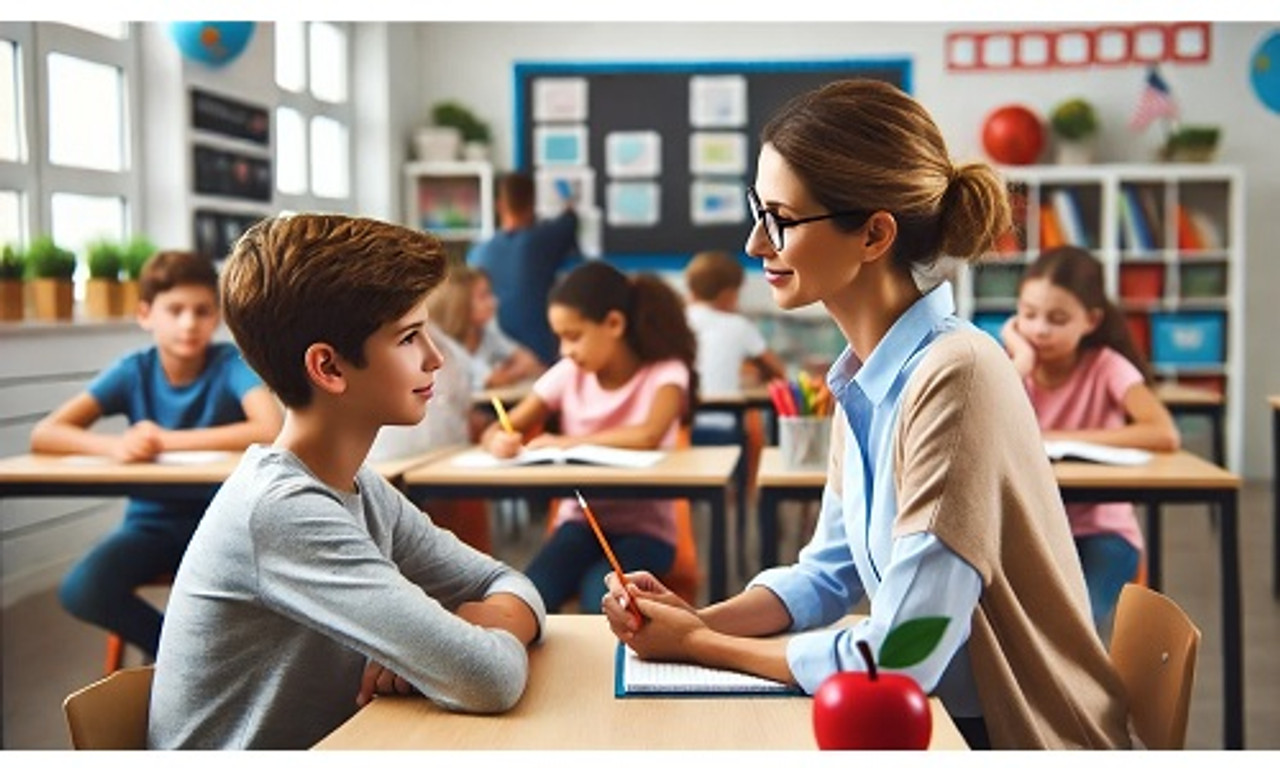Managing Classroom Behavior: Tips and Strategies from Educators
5th Aug 2024
Classroom management is a vital skill for any teacher, ensuring a conducive learning environment for all students. Recently, a Facebook discussion among educators revealed various effective strategies to handle negative behavior or when students push back. Here are some of the best approaches shared:
One-on-One Conversations
One educator emphasizes the importance of personal interaction. They talk to students individually at their desks to understand the root of their behavior. This approach helps in addressing specific issues and finding tailored solutions. It's a method that fosters trust and allows students to feel heard, which can be instrumental in changing negative behaviors.
Positive Communication with Parents
Another teacher takes a proactive approach by calling five parents each week to praise their children. This positive reinforcement creates a ripple effect, encouraging other students to exhibit good behavior in hopes of receiving similar calls. This method not only builds a positive relationship with the parents but also motivates students to maintain good behavior to earn their teacher's praise.
Maintaining Authority with Respect
Some educators suggest ending sentences with "Thank you" to avoid power struggles. By giving students the last word, teachers can manage conflicts without escalating tensions. Additionally, using respectful language models the behavior expected from students and helps in maintaining a calm and respectful classroom environment.
Natural Consequences
One approach believes in natural consequences. For instance, if a student attempts to showcase basketball skills by throwing trash, they must pick up trash. This teaches responsibility and accountability. Natural consequences help students understand the direct impact of their actions and encourage them to make better choices in the future.
Private Conversations and Praises
A teacher avoids battles by discussing expectations and consequences privately. They use a series of structured questions to guide these conversations:
The Four Questions:
- What are you doing?
- What are you supposed to be doing?
- Are you doing it?
- What are you going to do about it?
Four Questions for Disrespect:
- How are you talking to me?
- How are you supposed to be talking to me?
- Are you doing it?
- What are you going to do about it?
These questions help students reflect on their behavior and make more conscious decisions about their actions.
Clear Expectations and Consistency
One educator focuses on clear expectations, warning students privately and documenting behavior. This clarity helps students understand the consequences of their actions, reducing the likelihood of repeated misbehavior. Consistency in applying rules and consequences is crucial in helping students know what to expect and what is expected of them.
Reflective Practices
Another teacher uses behavior reflections through Google forms, which are shared with parents if issues persist. This reflective practice helps students recognize and correct their behavior. By documenting and reflecting on their actions, students can see patterns in their behavior and work on making positive changes.
Building Relationships
Many educators stress the importance of building relationships. Showing genuine care and interest in students' lives can significantly impact their behavior. Asking about their feelings and offering support demonstrates that teachers care beyond academics. Strong relationships can create a sense of community and belonging in the classroom, which can reduce negative behaviors.
Structured Discipline Plans
One teacher outlines a structured discipline plan, including warnings, parent calls, silent lunches, and referrals. This step-by-step approach provides multiple opportunities for students to correct their behavior before facing severe consequences. Having a clear plan helps students understand the progression of consequences and motivates them to improve their behavior to avoid more severe penalties.
Positive Reinforcement and Classroom Culture
Another educator implements a card system akin to soccer, with yellow and red cards for minor and repeated offenses, respectively. They also use a prize wheel to reward good behavior, reinforcing a positive classroom culture. Positive reinforcement encourages students to continue displaying good behavior and creates a more positive and supportive classroom environment.
Proactive Measures
One teacher reviews students' records to identify potential challenges early. By memorizing names and making positive phone calls home, they build rapport and set a positive tone from the start. Proactive measures help prevent problems before they escalate and show students that their teacher is invested in their success.
Love and Logic
Another approach uses the "Teaching with Love and Logic" method, focusing on kindness and patience. Issues are addressed with empathy, giving students a fresh start, which has proven effective in managing behavior. This method emphasizes the importance of maintaining a loving and supportive atmosphere while holding students accountable for their actions.
Additional Tips
Some educators suggest distracting students with classroom jobs to build relationships and keep them engaged. Others recommend having structured activities from the start of class, maintaining a calm demeanor, and setting clear rules and expectations. These strategies help create a structured and engaging learning environment that minimizes opportunities for negative behavior.
Conclusion
Managing classroom behavior requires a combination of empathy, clear communication, and consistent enforcement of rules. Building positive relationships, using natural consequences, and maintaining a calm and respectful tone are crucial. By sharing these strategies, educators can learn from each other and create a more positive learning environment for all students. Implementing these diverse approaches can help teachers manage their classrooms more effectively and foster a supportive and productive learning environment.

